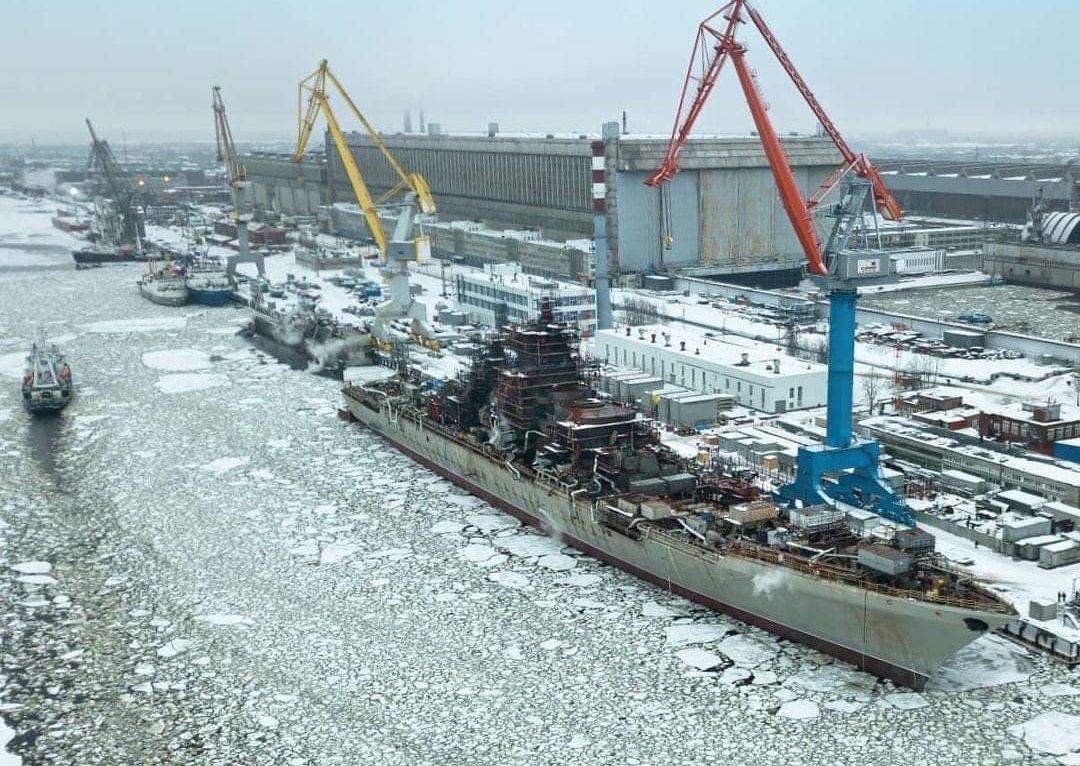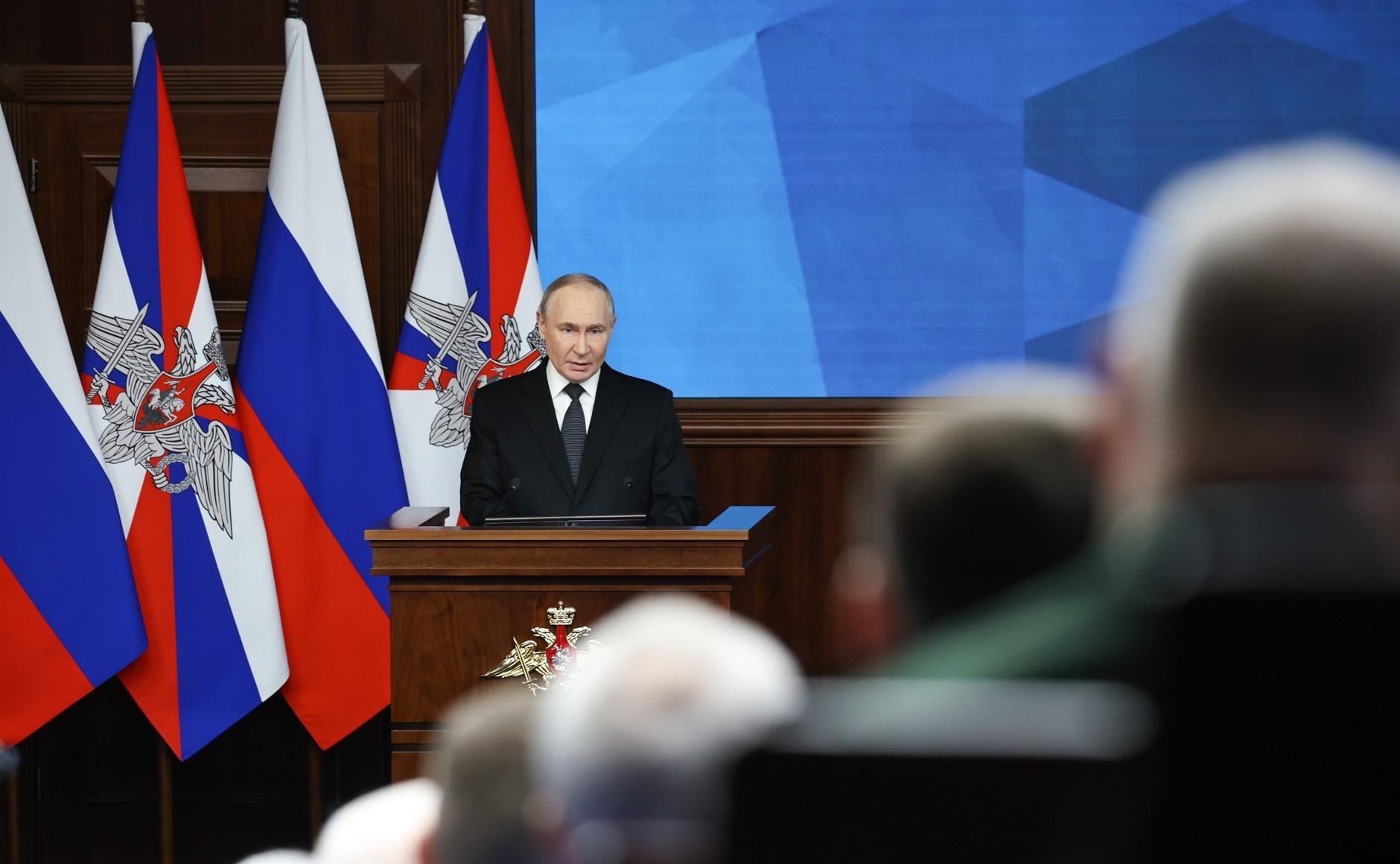
Russia’s Changing Navy
Russia’s Changing Navy
As a result of recently proposed reforms, the Russian Navy’s four fleets—Pacific, Northern, Baltic and Black Sea—as well as the Caspian Flotilla would become directly subordinate to the central headquarters of the Russian Navy, as they were prior to the military reforms of 2009–2012, instead of to the respective commanders of Russia’s military districts (TASS, April 23). This announcement, while still unofficial, appeared just three days after the changing of the Pacific Fleet commander from Admiral Sergei Avakyants to Admiral Viktor Liina, who previously commanded the Baltic Fleet (RBC, April 20; TASS, April 21). This replacement was shrouded in scandal as it was made on the last day of the sudden combat-readiness check of the Pacific Fleet that started on April 14 (RBC, April 20). Moreover, Avakyants became the second fleet commander to be replaced in Russia since the war in Ukraine started. The first was the former commander of the Black Sea Fleet, Admiral Igor Osipov, who was replaced by Vice-Admiral Viktor Sokolov soon after the loss of the fleet’s flagship Moskva missile cruiser in April 2022 (Bbc.com/russian, August 17, 2022).
Around the same time, some information leaked that appeared to reveal that the nuclear-powered cruiser Pyotr Veliky (Kirov-class battlecruiser) will probably be decommissioned, as the planned, and frequently delayed, modernization of this vessel is hardly possible considering the technical difficulties and costs of many years of ongoing repairs, modernization and rearmament of the same-class cruiser Admiral Nakhimov (TASS, April 19). Despite the anonymous denial of the leaked information and confirmation that the original plan for the cruiser’s modernization is still on schedule, the crew of the Pyotr Veliky began its redeployment aboard the Admiral Nakhimov, which is scheduled to be back in operation by 2024 (TASS, April 19; RIA Novosti, April 20).
Overall, the Russian Navy has played a minor role in the ongoing war against Ukraine. The Black Sea Fleet conducts missile strikes against Ukrainian cities and maintains anti-access/area denial zones around the Crimean Peninsula and in the Azov Sea, while marines from all of Russia’s fleets take part in combat activity on the ground (Radio Free Europe/Radio Liberty, February 18). However, all these changes in the Russian command structure and even the uncertain future of Russia’s main surface ships represent sequences in the way Russian strategy has developed after 14 months of fighting.
Three primary reasons underline the call for restoring direct subordination of the naval forces to the central naval headquarters instead of the military district commanders. First, systemic conflicts between the leadership of Russia’s fleets and the leadership of the military districts have appeared numerous times during the war. The losses of marines, which have taken place a number of times throughout the past 14 months of fighting, appeared to be extremely high during Russia’s recent attempt to capture the town of Vuhledar in February 2023. These massive losses even resulted in the apparent dismissal (still not confirmed officially) of Colonel General Rustam Muradov in April 2023, who was appointed as commander of the Eastern Military District in October 2022 and was one of the commanders of Russian forces in Ukraine (The Insider, November 7, 2022; The Moscow Times, April 4). These losses inevitably demoralized the remaining marine brigades and affected the navy’s overall operability.
Moreover, the district commanders also oversee the district groupings of Russian troops in Ukraine, and they simply cannot pay the necessary attention to the various naval fleets—particularly regarding their training and operability. Consequently, if the major naval forces do not take part in the war, their combat capacity will significantly decrease. In turn, this decrease in combat effectiveness will limit the Kremlin’s ability to use its fleets as leverage for further escalation and bargaining with the West, considering that the Russian leadership believes that Ukraine is a battleground for the Russia’s long-term confrontation with the West and its allies.
Briefly speaking, district commanders often take marines from the naval fleets to carry out key combat tasks on the Ukrainian battleground (The Moscow Times, February 14). However, these tasks regularly contradict with those tasks assigned by the various fleet commanders and undermines the legitimacy of their leadership among the fleets’ personnel. As a result, the fleet commanders resist the district commanders’ orders, especially since the district commanders have been replaced regularly since the start of the war.
Second, after Finland joined the North Atlantic Treaty Organization (NATO) in April 2023 and in the face of impending Swedish membership, Russia needs to reconsider its vision toward its navy. For example, the Baltic Fleet and even the Northern Fleet are becoming too vulnerable. The Baltic Fleet may even lose its role as a significant military force in the region, as its potential area of operation seems limited to the waters near its bases in Baltiysk and Kronstadt. The Northern Fleet’s main bases and even the only Russian shipyard in Severodvinsk responsible for manufacturing and repairing nuclear-powered submarines and other battle vessels are in the potential operational zone of NATO air power, especially considering the upcoming rearmament of the Finnish Air Force with F-35 fighter jets (The Barents Observer, May 28, 2022). All this means that the headquarters of the Russian Navy needs to be more flexible in operational planning and power projection among its fleets.
Third, and perhaps most consequential, Moscow needs to reconsider the rearmament strategy for its navy. Russia is still able to produce nuclear-powered strategic and attack submarines, but its ability to modernize conventional naval forces is strictly limited (see EDM, March 2). The repair, modernization and rearmament of the nuclear-powered Admiral Nakhimov, which has been ongoing since 1999, perfectly illustrates these limits. And even if this cruiser is finally operational in 2024, its firepower will be comparable only to that of one Ticonderoga-class cruiser. That is why, realistically, the modernization of the Pyotr Veliky will not begin for a number of years, if at all.
This means that, in the long term, Russian naval forces will experience critical imbalances. On the one hand, nuclear-powered submarine forces will be stationed in the Arctic Ocean and Okhotsk Sea. And on the other, corvettes, frigates, small missile vessels, Soviet-era battleships and diesel-electric submarines will be spread among the four fleets and Caspian Flotilla together with the marines and coastal defense. In this way, the change in command structure of the Russian Navy aims to solve the challenge of how to improve its operational capacity in the face of a deepening crisis within the Russian Armed Forces brought on by severe manpower shortages on the Ukrainian battlefield and increasingly dysfunctional defense production at home.


